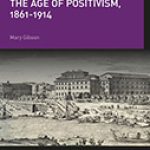Neighbourhood Policing: The Rise and Fall of a Policing Model

Authors: Martin Innes, Colin Roberts, Trudy Lowe, & Helen Innes
Publisher: Oxford Scholarship Online, 2020. 256 pages.
Reviewers: Caroline Hay & Peter Neyroud ǀ June 2022
This book describes the development, implementation and, ultimately, the decline in political and organisational support for Neighbourhood Policing in England and Wales. As such, this is a very significant book, both for policing generally and more specifically for our understanding of Community Policing. One reason for its importance is that it documents the efforts to implement a policing strategy at a national level across 43 local police forces and over 300 local authority areas in England. It is, therefore, of interest to both policymakers and practitioners as well as students and academics in policing.
This is an engaging book — right from the opening chapter the reader’s attention is grabbed by the illustrations of the complexity of antisocial behaviour and how this impacts communities. As the book progresses, it introduces the challenges police face with public confidence, trust and visibility and describes what inhibits their interaction with communities.
The authors then look at the value of problem solving. Given the strength of the evidence for Problem-oriented Policing in the Campbell Systematic review by Hinkle, et al. (2020), the authors’ observations on this subject are important and timely. They surmise that POP can be too internally focused by relying on police data and management decisions and that, furthermore, it does not make sufficient efforts to reflect unreported crimes.
It seems no neighbourhood policing book could be complete without revisiting and debating ‘Broken Window’s Theory’ (Wilson and Kelling, 1982). These authors conclude this section with a thought-provoking reflection, “a number of concerns have gravitated around the harms that arise when ‘broken people’ are treated in the same way as ‘broken windows’.” This is an important thread that runs through the book — that people who are suffering from deprivation are less likely to get involved in their communities, and they then lose their voice. In essence, neighbourhoods which need Community policing the most, don’t regularly receive it.
This dilemma is explored further in Chapter 4, when the work of Goffman is reviewed. As set out by the authors, Goffman argued that people who don’t comply with the police get harsher treatment. It is distinctions like these that widen the gap between the police and marginalised communities. Taking the time to consider why someone has ‘failed that attitude test’ is unlikely when the officer is in ‘crime fighter mode.’ Given the heated debates about police reform and police relationships with Black communities, the exhortation to track the impact of enforcement more carefully is well made.
There is then a temporal journey reflecting on the development of community relationships through the National Reassurance Policing Programme (NRPP), which was the national programme established to implement Neighbourhood Policing in England. The premise underpinning this policy was that people are more likely to engage in social controls when they feel safe, whilst understanding that the fear of crime often outweighs reported crime. The authors go on to explore the reconfiguring of the model, to that of Safer Neighbourhood Teams, later reframed as Local Policing Teams, mainly as a result of budget constraints. They highlight the “postcode lottery” of neighbourhood policing with the term being so broad that local Police and Crime Commissioners and Chief Constables were able to adopt such widely different interpretations across the country as to devalue the brand of the model. The authors note that Community Policing is resource intensive, but argue that Local Policing Teams are less effective when they are asked to do ‘a bit of everything.’ This is also compounded by a training syllabus focused on crime fighting and the absence of a selection process to ensure that suitable officers with competent ‘soft skills,’ are allocated to the post. The authors argue strongly that the necessity to embed trust means that community officers need a longer tenure in post. They also draw attention to the value of Police Community Support Officers. A key aspect of the roll out of the Neighbourhood Policing model was the development of this partly empowered uniformed auxiliary force.
The central section of the book looks at the authors’ deployment of the SENSOR model in order to conduct surveys with a wide range of people and communities. They argue that their methodology gives a more layered view of the issues within communities, instead of the more standard practice of relying on small samples and methods which seem too frequently to focus on very low-level issues as policing priorities. The authors’ findings have been replicated by more recent research for the UK Police Foundation (Higgins, 2020) which showed that by asking people to rank the local policing issues in terms of threat, harm and risk, they identified a clear distinction among high harm priorities, and developed a clearer appreciation of the range of challenges facing the police.
Finally, the book explores three case studies designed to inform modern day policing. They provide some good evidence of the potential ways in which neighbourhood work can assist in Counter Terrorism Investigations and support the disruption of street gangs, depicting their role as intelligence gatherers and experts as well as their problem-solving role, within a pluralistic society.
The book concludes that neighbourhood policing in England has declined, partly as a result of the deep cuts to police numbers – an English version of “defunding the police”, but one in which government chose to make cuts in other public services as well, rather than seek to switch funds to non-police agencies. The authors also show how efforts are being made in the digital space as people look to communicate with each other differently during the Pandemic. In a final expression of hope, the authors suggest that there is growing acknowledgement that a revival of community policing is nigh. Their book provides a key manual for those charged with that task.
In conclusion, this book provides a rare insight into an internationally important community policing model. For those passionate about community and neighbourhood policing, this is a treat. For students of policing, this is a well-argued and self-critical analysis of the development of a policing strategy by one of the key teams responsible for providing the thinking and applied research that underpinned it. As such, this book comes close to an “auto-biography” of the strategy.
References
Higgins (2020) Policing and the Public: Understanding Public Priorities, Attitudes and Expectations. London: Police Foundation. Downloaded at https://www.police-foundation.org.uk/2017/wp-content/uploads/2010/10/insight_paper_1.pdf.
Hinkle, JC, Weisburd, D, Telep, CW, Petersen, K. (2020) Problem-oriented policing for reducing crime and disorder: An updated systematic review and meta-analysis. Campbell Syst Rev.; 16:e1089. https://doi.org/10.1002/cl2.1089
Wilson, J.Q. and Kelling, G. (1982). Broken Windows: the Police and Neighborhood Safety. Atlantic Monthly, 211, 29-38.
Caroline Hay is an Inspector with the City of London Police.
Peter Neyroud is an Associate Professor in Evidence-based Policing at the University of Cambridge


